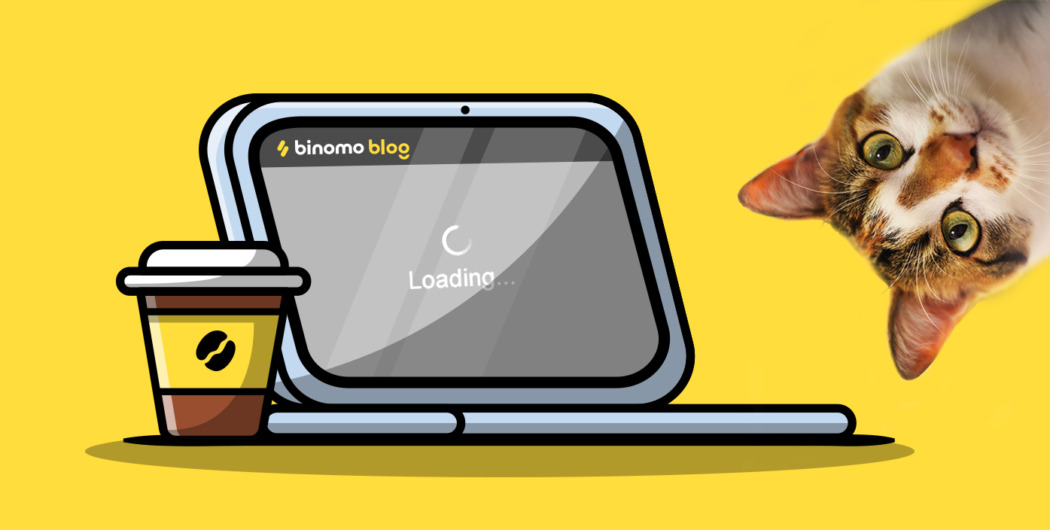

As an aspiring trader looking to boost your skills, mastering various candlestick patterns should be a top priority. The pin bar is one of the most powerful reversal patterns you can leverage to generate profits potentially. When this candlestick formation occurs at the top or bottom of a trend, it can signal a reversal is on the horizon. Correctly identifying the pin bar pattern will add a valuable tool to your trading arsenal.
In this guide, you’ll discover precisely what constitutes a pin bar candlestick pattern and how to spot this formation. You’ll also learn a proven trading strategy to capitalize on pin bars when they appear on your charts. The pin bar pattern can help you spot potential trend reversals across any market or time frame, whether you’re day trading stocks, forex, or futures. By the end of this article, you’ll have a solid understanding of how to trade the pin bar candlestick pattern.
What Is a Pin Bar Candlestick Pattern in Forex?
The pin bar pattern shows that the price moved lower after the opening but then rallied to close near the opening. This indicates the market rejected the lower prices and is a sign of support for the bulls. When a pin bar forms at the bottom of a downtrend, it can signal the downtrend may be ending, and a reversal to the upside could be forthcoming.
Conversely, when a pin bar pattern forms at the top of an uptrend, it can signal the uptrend may be ending, and a reversal to the downside could be forthcoming. The key is for the pin bar to close near the open, showing the market rejected the extended wick and favored the initial price area.
The most potent pin bars occur at key support and resistance levels, indicating the market rejects a key level. For the pattern to be valid, the open and close must be in the upper 25% of the candle range. The longer the tail, the more significant the rejection of lower prices.
To trade this pattern, place a stop loss just above the high or below the pin bar’s low and a profit target at the next key support/resistance level. The pin bar pattern can produce explosive moves, so look for reversal confirmation before entering a trade. The pin bar can become a powerful tool in a trader’s arsenal with practice.
Key Characteristics of the Pin Bar Formation
To properly identify the pin bar candlestick pattern, you must understand its key characteristics.
Distinctive Shape
The pin bar should have a long upper or lower shadow at least twice the length of the real body. The real body, which represents the open and close, should be near one end of the bar. This indicates that the market opened and closed near its high or low after moving substantially in the opposite direction intraday.
Preceding Trend
The pin bar should form against the prevailing uptrend or downtrend. For a bullish reversal pin bar, it should form after a downtrend. For a bearish reversal pin bar, it should form after an uptrend. The pin bar shows that the prevailing trend has been rejected, at least temporarily.
Location in Trend
The most effective pin bars form at key support or resistance levels. For a bullish reversal, look for a pin bar to form on or just above support. For a bearish reversal, look for a pin bar to form on or below resistance. Pin bars that form in the middle of a trend are less likely to lead to a reversal.
Volume
There should be a high volume on the pin bar and the next 1-2 bars. This shows increased interest in the reversal signaled by the pin bar. Volume confirms the importance of this trading level.
By identifying these four characteristics in the pin bar candlestick pattern, you will be better equipped to determine whether it signals an important reversal of trend. Look for congruence across multiple factors for the highest probability reversal setup. With practice, you can spot these key pin bars and trade them for potentially large rewards.
How to Identify Valid Pin Bars?
To identify a valid pin bar candlestick pattern, you’ll want to look for a few key characteristics:
Location
A pin bar should form at a key support or resistance level or after a prolonged move up or down. This shows that the pin bar is rejecting an important level, indicating the potential reversal of the current trend.
Long tail
The pin bar should have a long tail (also called the “shadow” or “wick”), which represents the high and low of the price movement during that time period. The tail should make up at least 2/3 of the entire length of the candle. A long tail shows that the buyers or sellers stepped in aggressively, rejecting the extreme high or low.
Small real body
The “real body” of the pin bar, representing the opening and closing prices, should be relatively small compared to the tail. The smaller the real body, the more significant the rejection of the high/low represented by the tail.
Direction of tail
For a bullish reversal, the tail should point upwards, rejecting lower prices. For a bearish reversal, the tail should point downwards, rejecting higher prices.
Support/Resistance
Look for a pin bar touching or very close to a key support or resistance level. This shows the pin bar is rejecting that significant level, indicating a reversal is potentially forming.
Volume
A pin bar with high volume shows a strong rejection of that extreme price level and adds more significance to the pattern. Volume is not always necessary for a reversal, but it does strengthen the signal.
By applying these guidelines, you’ll be able to spot high-probability pin bar reversal patterns and potentially capture a change in trend. However, always use proper risk management and consider other factors like overall price action when trading pin bars.

Strategies for Trading the Pin Bar Pattern
To effectively trade the pin bar pattern, there are several strategies you should consider:
Look for pin bars in trending markets
The pin bar pattern is most effective when it forms in the direction of the prevailing trend. This could be an uptrend or downtrend. The pin bar will often signify a continuation of the trend, so look for buying opportunities in an uptrend and shorting opportunities in a downtrend. The longer the trend has been in place, the more significant the pin bar signal.
Consider market context
Examine the wider context of the market to determine the significance of the pin bar. For example, a pin bar that forms at a key support or resistance level or after a gap in the market will often signal a reversal. A pin bar that forms in the middle of a range, however, may be less significant. Analyze the current market structure and recent price action to assess the importance of the pin bar pattern.
Watch for confirmation
For the most reliable pin bar trades, wait for confirmation before entering the market. This could be in the form of the next candle closing in the direction of the pin bar or the price moving past the high or low of the pin bar. Confirmation ensures the pin bar signals a genuine reversal or continuation in market sentiment rather than a false move that quickly fades. Patience is key.
Set a stop-loss
As with any trade, set a stop loss when trading the pin bar pattern. Place your stop loss on the opposite side of the pin bar tail. This will ensure you exit the trade if the pin bar turns out to be false but will still give the pattern room to move in your favor. A good risk-to-reward ratio is key to success when trading pin bars.
Target previous highs or lows
When trading with the daily pin bar pattern, set a target at the previous significant high or low. This allows a high-risk-to-reward trade should the pin bar pattern play out as expected. For pin bars on lower timeframes, set smaller targets and trail your stop loss.
Common Mistakes to Avoid When Trading Pin Bars
To effectively trade the pin bar pattern, it is important to avoid some common mistakes.
Entering too early
It is easy to get eager when you spot a pin bar and want to enter the trade immediately. However, the best approach is to wait for confirmation that the reversal is valid before entering. The pin bar pattern signals that a reversal may be coming, not that it is guaranteed. For the best chance of achieving goals, wait for the next candlestick to close to confirm the reversal before entering the trade. If the next candle continues toward the pin bar tail, the reversal is likely valid. If not, it was probably a false signal.
Placing stops too tight
When trading pin bars, place your stop loss at a minimum of the pin bar’s tail. The tail represents the last point of rejection before the reversal, so the price would need to exceed that level to invalidate the signal. Any tighter stop and you risk being stopped out of a valid trade due to normal market noise and fluctuations. Wider stops, like behind the next swing, high or low, also give the trade more room to breathe.
Not managing the trade
Just because you entered the trade does not mean you can sit back and wait for the profits to roll in. Actively manage your pin bar trades by moving stops to break even once the price has moved in your favor by the same amount as your stop loss. This ensures, at a minimum, you will not lose money on the trade if the price reverses. You can also trail stops higher as the trade becomes more profitable to lock in gains as the trend extends.
Lack of confirmation
For the highest probability pin bar trades, look for confirmation from other technical indicators like MACD, RSI, or moving averages. If the pin bar signals a reversal in an uptrend, wait for the MACD to cross below the signal line or for the RSI to drop below 50. For a reversal in a downtrend, look for the opposite. Multiple indicators confirming the reversal will give you more confidence that the pin bar pattern will lead to a sustained trend change.
Conclusion
As you have learned, the pin bar pattern can be an extremely useful tool for price action traders. By following the guidelines discussed here and practicing the pin bar strategy on a demo account, you’ll gain valuable experience identifying this pattern and acting on the signals it provides. With consistent practice, the pin bar setup can become second nature and a key part of your trading plan. Remember, stay patient and disciplined, focus on high-probability pin bars, use appropriate stop-loss and target levels, and maintain an effective risk/reward ratio. If you do so, the pin bar can be a profitable pattern that leads to many successful trades. Keep learning, stay determined, and keep improving your skills – you’ll be trading like a pro in no time.











